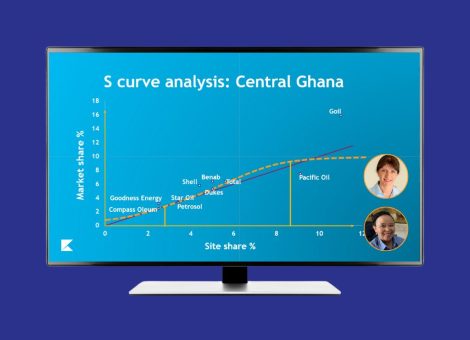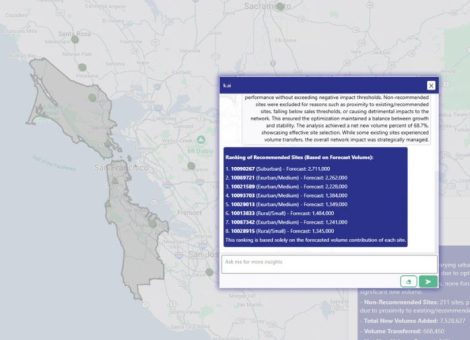Seven steps to take before site acquisition
Your company objectives could be any or all of the following:
- To extend reach into a new market
- To provide scale in an existing market to improve efficiencies
- To improve visibility
- To achieve critical mass
- To grow revenues and earnings
When considering acquiring service stations that already exist in the market, there are a number of steps an investor should consider to ensure the best possible investment decision. In this post, we discuss those steps.
The primary steps to site acquisition
1. Revisit your strategic investment area definition
Does the site fall within the company’s defined strategic investment area? Successful network developers follow a long-term, strategic plan. They are disciplined and consistent with regard to only selecting sites that fall within preferred investment areas. These areas will have been assessed and selected by the company in terms of market attractiveness and competitive positioning. Factors taken into account may include supply and distribution costs, margin attractiveness, growth potential, security, competitive presence, etc. As you begin to move toward acquisition, it’s critical that you revisit this definition in order to familiarize yourself with these factors and ensure you can distinguish a site’s fit.
2. Assess on-site attributes
If the site does fall within a strategic investment area, it must be assessed in terms of what attributes it has on site. For example, how big is the plot? Does it have access to high traffic volumes? Is it highly visible with easy access/egress? Is there a shop and QSR? Is there room for forecourt expansion? The list goes on; the important element is that you are following a list and matching these attributes to the goals outlined previously.
3. Understand and assess potential
What is the sites current fuel volume and shop turnover? And more importantly, what is the site’s potential volume throughput and shop turnover? Has it reached saturation? Is there an opportunity to achieve higher volumes in the future?
For various reasons, service stations do not always achieve their potential volume and revenues. Assessing potential volume based on location strength and comparing this to actual volume will help you understand the quality and future of a site, and to categorize its potential into one of four quadrants:
High Potential/High Performance – These are star sites, i.e., they are performing as expected. However, this does not mean that they cannot improve — there is always room for improvement.
High Potential/Low Performance – These are sites that are under-performing their potential and offer opportunities to increase volumes/revenues through various capital and non-capital interventions.
Low Potential/High Performance – These are sites that are over-achieving, possibly because they have no competitors nearby. They are vulnerable to lose their volume if a competitor builds a more attractive service station in the trade area.
Low Potential/Low Performance – These sites are situated on poor real estate, with poor prospects for volume growth. They should be considered for divestment or closure, not for investment.
4. Dig deeper
In the last step, you’ve determined which quadrant your potential site falls into. Assuming you are now assessing high-potential sites, drilling down and understanding the variables that drive the site’s performance is your next move. Dive into research, considering traffic, demographics, site facilities, brand strength, competitive position, operating practices and merchandising practices in order to adequately assess areas of weakness and places to maximize potential.
5. Conduct “what if?” scenarios
Once the areas of weakness have been identified, find a way to model a simulated knockdown and rebuild. With the right technology and partnership, you can request ‘what if’ scenarios to learn more about your site’s potential by changing its attributes.
A simulation can calculate estimated fuel volume and shop turnover improvements for the rebuilt site, but it can go even further by indicating where the volumes come from, i.e., which competitor (or own sites) lose the volume that it gains. This identification will help you understand cannibalization from your nearby sites and assess how heavily your acquisition’s volume gains will affect those sites.
6. Determine payback period
Using the changes modeled in the simulation, the right technology will calculate new fuel volumes and shop revenues for the site. These projected fuel volumes and shop turnover, together with the capital cost of the required rebuild (and purchase price of the site acquisition) can be inserted into a Financial Model (DCF) to establish the Return on Investment (ROI) and payback period for the acquisition. When this has been calculated, consider your strategic investment plan, and determine whether the IRR and Payback Period of this investment meet your strategic requirements.
7. Plan for cannibalization
By acquiring the site, new volumes and shop turnover is added to the company’s network. There may be some loss of volume from other owned sites in the vicinity through cannibalization. Not only can you measure the effect on one, individual site, as mentioned in step 5, but your total company performance in the market can also be measured, through viewing the improvements made to market share and market effectiveness.
By following the steps described above, it is possible to take the guessing out of a new site acquisition. You can calculate expected performance and return on investment for acquisition before you commit any capital, and can account for the full effect on your retail network. But none of this is attainable without the right partner in technology and consulting. Get started on your new site acquisition analysis today with Kalibrate’s Location solution.
Read more articles about:
Location intelligenceSubscribe and get the latest updates
You may unsubscribe from our mailing list at any time. To understand how and why we process your data, please see our Privacy & Cookies Policy
Related posts
Fuel pricing
Middle East / Africa - Fuel network planning: Critical insights
Join our team as we look at the key points of insight that fuel network planners need to consider when making...

Location intelligence
AI in location intelligence: The force multiplier for smarter site selection
AI is rapidly advancing in the world of real estate - this is the first blog in a two-part series on incorporating AI...


